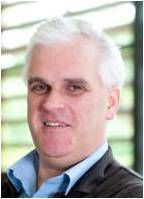Quo Vadis from Structural Biology to Systems Approaches?
- Location
- Leonard Deacon Lecture Theatre, Medical School
- Dates
- Wednesday 5 December 2012 (16:30)

Ulrich Günther graduated from the University of Tübingen where he also completed his PhD under supervision of Klaus Albert about “Localisation Methods for 19F-in vivo NMR spectroscopy”. He has since worked in the field of Nuclear Magnetic Spectroscopy (NMR). Following his PhD he spent 4 years at Tufts School of Medicine, supported by a fellowship of the Studienstiftung des Deutschen Volkes, working with William Bachovchin and later with Brian Schaffhausen, first focussing on small molecule structures of boronic acid inhibitors (Val-boroPro, Talabostat), and later on protein ligand interactions. In 1996 he moved to Frankfurt supported by a fellowship from the German Research Foundation (DFG) to work at the BMRZ NMR centre, continuing work on protein ligand binding in the group of Prof Heinz Rüterjans, where he completed a Habilitation in 2001. The kinetic mechanism of protein ligand binding has been one of his key interests for many years, and he used NMR to elucidate mechanisms where slow rearrangements in proteins are triggered by the interaction with small molecules.
Since 2004 he has been Scientific Director of HWB-NMR. In this role he helped to shape the newly founded HWB-NMR facility as a leading European NMR centre, involved in many European infrastructure and research projects. He enjoys working in a European and international context, and has coined projects such as WordWide-NMR which brings together NMR centres from across the world, including China, India, and countries in South America, together with several European sites, to exchange staff members and to run joint international workshops around the world.
His current scientific work is primarily oriented towards NMR metabolomics and metabolic flux analysis, as a tool to study altered metabolism in the context of disease. He runs the Metaflux EU network, focussed on metabolic fluxes in cancer and the development of NMR methods in this context.
ALL ARE WELCOME TO ATTEND